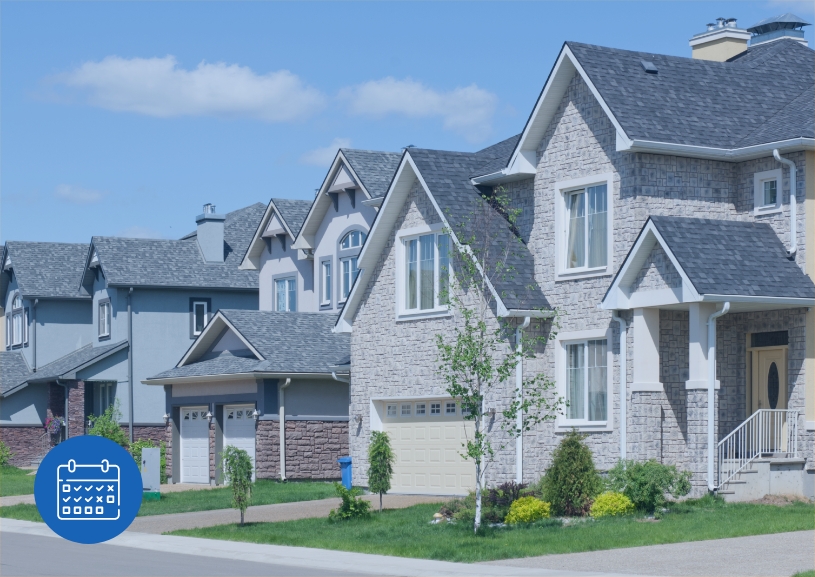Real estate farming is a system used by some real estate agents to generate new business. The idea is to focus on a specific geographic area and become the "go-to" agent for that area. By becoming an expert on a particular neighborhood, real estate agents can build a reputation as the go-to source of information on farming properties. Read on to find out more!
Real estate farming is a great way to generate regular business from a specific area. You can cultivate relationships with potential clients and turn them into leads by providing consistent value and attention to a particular neighborhood. These leads will likely become long-term clients, providing you with reliable business for years.
To succeed in real estate farming, capturing at least 30% of all sales in your target area is important. By following our detailed farming strategy, you’ll be able to dominate your farm area and make a lot of money in the process:
If you want to become your neighborhood’s top real estate agent, we can assist. From identifying your target market and creating a marketing strategy to executing it flawlessly and standing out from the competition, we can help you become the top agent. You need a solid plan, and we have the experience and expertise to help make it happen!
Are you ready to become your neighborhood’s top real estate agent with real estate farming? Here are four simple steps to get you started, plus the budget you will need in your first year.
Real estate farming is all about selecting the correct location. A good farm has 500 or fewer houses, and you’ll want to choose a location with a high absorption rate and a good turnover rate. You’ll also want to choose a location with some name recognition and built-in knowledge. We have all the resources you’ll need to find the ideal farm area in our Ultimate Real Estate Farming Strategy Guide. We’ll teach you how to compute absorption and turnover rates, as well as do demographic, regional, and property research.


In order to be the go-to real estate agent in your neighborhood, it’s essential to start farming your area. This means regularly sending out valuable information to homeowners in order to keep you top-of-mind. You can do this through postcards, market updates, social media groups, and neighborhood websites. By creating a calendar of planned messages, you can ensure that you’re providing consistent value to your audience. Plan the “what,” “when,” and “how” of your outreach in advance so that you can reserve face time for clients that are ready to move forward with a transaction.
When it comes to real estate farming leads, they differ from the leads you get from your home valuation landing page, so be sure to track them separately. We believe the best way to track leads is by investing in a good CRM. Using this, you can identify farm contacts, automate digital interactions like email and text messages, and document the value you’ve provided throughout your farm. A CRM also makes it simple to keep track of every response you make and ensure that you follow up quickly on every point of contact.

Now that you’ve chosen the perfect farm area and implemented a plan to deliver consistent value, it’s time to set your automated communication plans into action. This will involve a high-touch outreach strategy to follow up with your postcards, market updates, and social posts. Success in real estate farming doesn’t come from simply setting it and forgetting it. To be effective, you need to be active in the communities you’re serving and cultivate relationships with your clients regularly and consistently. Your automated communication plan should include a mix of content that is educational, informative, and entertaining. This will ensure that your clients and prospects are engaged with your brand and that you’re their first thought when they’re ready to move. Being personal and responsive will keep them coming back for more!
As a real estate agent, it’s important to stay top-of-mind with potential clients. One great way to do this is by using social media. In particular, social media can be a powerful tool for real estate farming.
Since social media is so widely used, real estate agents can connect with potential clients through various platforms. This includes Facebook groups and homeowners associations’ websites and social media profiles. Additionally, agents can create posts that are specific to their farm area. This will help them interact with potential clients more regularly and keep them informed about what is happening in the real estate market. While social media should not replace traditional farming methods, it can help to improve them.
There are upfront costs associated with effective real estate farming, but if you’re willing to stick with it, the returns will more than repay your investment. For example, annual costs for a real estate farming operation with 250 homes would typically look something like this:
For 250 homes, you’ll send 2000 postcards (250 x 8 = 2,000), 2400 (200 / month x 12 months) property status update postcards, 1000 (250 x 4 = 1,000) quarterly letters, and 250 door hangers for your annual door-knocking session. You’ll also want a neighborhood website, which will set you back $3500. But that’s not all – to truly reach your target audience, you’ll need some farm-specific content on your website. It’s free! Finally, consider sponsoring one event each year which will cost you $1000.
The cost of postcards will total $1260, while the bill for letters will come to $550. Door hangers will cost you $100, and your neighborhood website will set you back $3500. So, the total cost of marketing your farm through real estate will be $7994 per year.
In any given neighborhood, if you can invest in a real estate farm and generate just three commissions from sales, you’ll easily see a positive return on investment. Not to mention, each sale will likely cover the costs of your initial investment and then some. If you’re able to turn over three or four transactions annually, the benefits are clear. A typical home in a good area will sell for around $400,000. That means a single 3% commission is worth $12,000 in GCI or gross commission income. When you invest in the right areas, it’s easy to see how a few well-placed investments can significantly impact your real estate business.
Much work goes into real estate farming. You will need to be well-organized, have a solid execution plan, and ensure you have the tools to deliver value to your farm area. While anything could work when it comes to getting your message out there, we’ve found the following methods to be the most effective for real estate farming.
How Often to Deliver: Twice per quarter
Typical Annual Cost (250 homes): $1,260
Real estate farming postcards and flyers are excellent ways to show statistics, authority, and, most important, messages to people in your farm area. Postcards should always be utilized when real estate farming. There is an endless number of quarterly snapshots of the market, recipes, or sports schedules that can be put on them.
When to Deliver: Whenever a home in your farm area is put on the market or sold.
Typical Annual Cost (250 homes): $1,584
On-demand postcards are a novel and exciting way to market your business. These cards are perfect for notifying neighbors about market activity in their area, especially after a house has sold. You should expect an increase in traffic to your house value landing pages after mailing these postcards.
Sending up to 50 postcards to the majority of similar homes in your farm region is an excellent way to alert homeowners and provide them with critical information and insight into their financial options if they decide to sell. Postcards are a fun and professional way to stay in front of potential sellers and keep them informed about the market.
When to Deliver: At least monthly
Average Annual Cost: Free (as long as you have a website)
If you’re like most farmers, you’re probably using your website to post updates about what’s going on at the farm, from what’s in the fields to what’s in the farm. You may also be using your website to post information about your neighborhood – like where it is and what amenities it has. But did you know that you can use your website to help sell your farm?
Think about it this way: when people are looking for a place to live, they often go online to research. They’ll look for information about the neighborhoods they’re interested in, and they’ll look for information about the local businesses. When potential buyers see that you’re the go-to expert on your region, they’ll be more likely to contact you when they’re ready to buy.
How do you show potential buyers that you’re the expert? By posting weekly updates about the micro-neighborhood market, neighborhood happenings, and even local events. Your content can be five or six sentences long and include an image. This week, why not start by posting a quick overview of your neighborhood?
How Often to Deliver: Quarterly
Typical Annual Cost: $550
When writing a real estate letter, going in-depth about market analysis and what’s happening in your local community is important. You can use this space to communicate with your audience and give shoutouts to those doing good work. When it comes to property buying and selling, let them know that you’re the expert. Sharing this type of content will help you build trust with your audience and establish yourself as a credible source in the community. If you’re farming in a high-end neighborhood, consider handwriting letters. Yes, it may take time, but the personal touch will pay off handsomely with selective sellers.
How Often to Deliver: New content one to two times a month
People won’t visit your website if it’s all about you. A website focused on their neighborhood, however, is a different story! It can include interviews with local business owners, news, coupons, and the latest information on the real estate market. This way, your farming community can stay up-to-date and in the know.
How Often to Deliver: Once a year
Typical Annual Cost: $100
Intentionally getting face-to-face with people on your farm will make your farming efforts more effective. Even though some people may not like it, knocking on doors is something you should do consistently to reach your entire farm. It takes practice, courage, and, most importantly, an effort to do this. Don’t give up until you’ve tried knocking on every door. The first 50 doors may be difficult, but it’ll get better with each door you knock on.
How Often to Deliver: Once a year
Typical Annual Cost: $1,000
While event sponsorship can be a fun way to meet and greet members of your community, it’s vital to choose events that will be a hit with potential sponsors. It’s usually a good idea to give away free pumpkins in October. You might also consider supporting a neighborhood garage sale, neighborhood fireworks show in July, or providing a free Christmas tree in December. Whatever event you decide to host, be sure that guests will enjoy it!
The key to real estate farming success is targeting a certain group of houses with a marketing message that adds value. Targeting a specific set of residences with a message that adds value is more likely to be effective than casting a wide net. The smaller the number of homes you select, the easier it will be to communicate nuances that appeal to all homeowners in your farm region. Maintain your farm’s size small, so you can concentrate on providing more value with your messaging.
Too often, people get caught up in real estate market trends and statistics when talking about real estate. However, unless you’re planning to buy or sell soon, these conversations can quickly become tedious. If you find yourself in this situation, try following the same advice you would for social media marketing: make 30% of your content market-related and the rest about the community. By doing this, your target audience will be more interested in what you have to say
By focusing on a specific geographic area, you can maximize your results and increase your income. Successful real estate farming yields around 30% of the transactions from a particular area. However, every market is different, and your success depends on area-specific information. Make sure to focus on the types of homes in the market, the competition you’re facing, and how long you’ve been active in the area. With this information, you can capture between 20 and 30% of the transactions in your area annually and see a significant increase in your business.
Real estate farming is not a fast-lane approach. Despite the fact that you may notice some fast effects from your efforts, the leads you gather in the first three months of operation are likely to be people who were already planning to acquire or sell a property. Allow a year for this technique before evaluating your outcomes.
Yes, we specialize in real estate farming services and can create a package that meets your needs and budget. Give our real estate farming experts a call today to find out more!
Real estate farming is a great way to get leads for sellers and buyers. It becomes more efficient over time as your messaging becomes sharper and more people recognize you. Your neighborhood sales metrics will improve as well.
Grow your business and save time with
a seamless experience
If you are looking for the most powerful Website Design and Internet Marketing for Real Estate Marketing, you have arrived at the right website!
We Examine Every Element of Your Business from Customers to Competitors…
Want to find out the latest in the world of Internet Marketing for the Real Estate Business. Whether you’re a Realtor, Developer, or Mortgage Banker, our newsletter examines best practices and the latest in innovations!
© BrokerLEAD 2023. All Rights Reserved